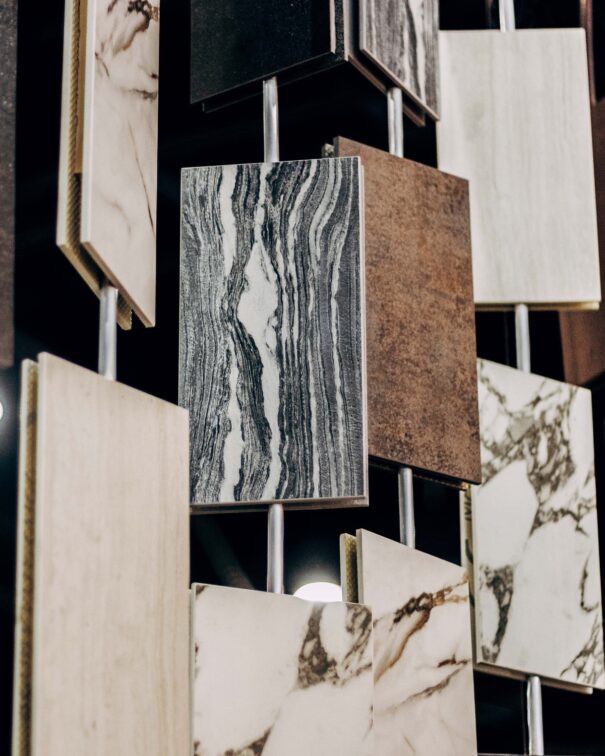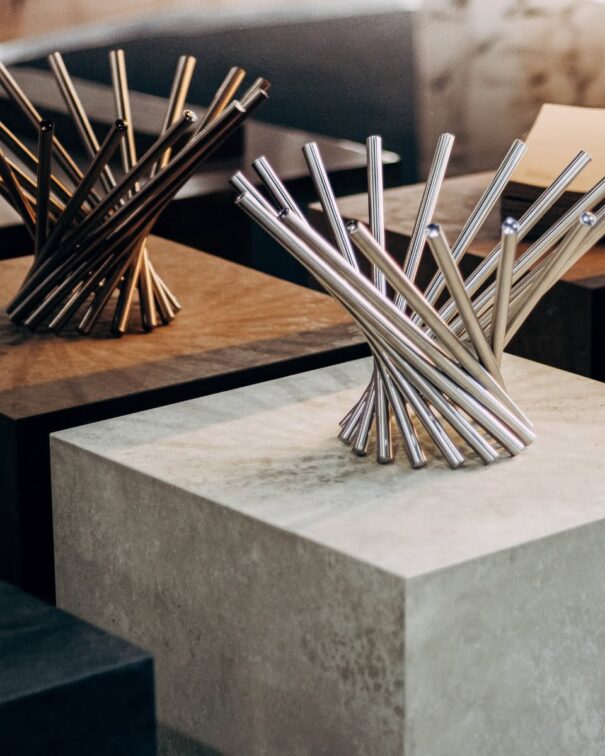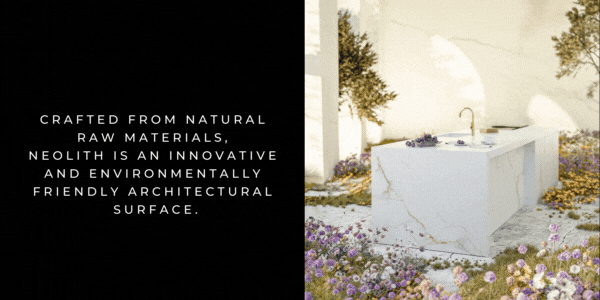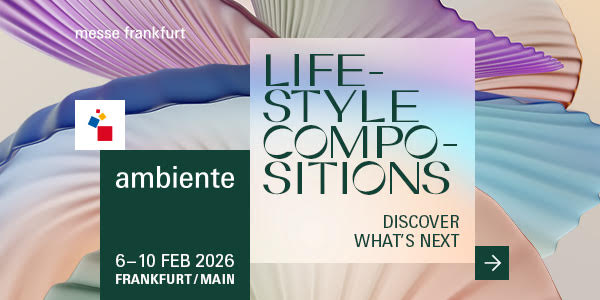Sculpting Emotion: Loredana Morton and Neolith Transform Sintered Stone at Decorex
Interview with Loredana Morton, Founder of LMI Interiors
At Decorex 2025, one installation stood out—not just for its visual power, but for how it challenged conventional expectations of material, form, and emotional connection. Designed by Loredana Morton, founder of LMI Interiors, this striking collaboration with Neolith pushed sintered stone into bold, sculptural territory.
What began with a simple question—“What if stone could behave like fabric?”—evolved into a multi-sensory experience where tactile engagement, emotional response, and architectural experimentation collide. Curtains ripple in carved stone, pendants float like sculptural artifacts, and every surface invites touch, curiosity, and dialogue.
In this exclusive interview, Loredana shares the vision, challenges, and philosophy behind the project—from subverting material expectations to creating a space that feels not just seen, but felt. With a background rooted in refinement, Italian heritage, and a love for layered materiality, she offers a glimpse into the mindset of a designer who’s reshaping how we interact with space—and what design can mean in the future.
Your installation for Neolith at Decorex 2025 feels like more than just a space – it’s an emotional and sculptural experience. What was the original spark or vision that set this project in motion?
We wanted to push the boundaries of what stone could be. Sintered stone is usually showcased in expected ways – kitchens, fireplaces, vanities. We wanted to completely flip that on its head and create something unexpected, sculptural, interactive, and visually unique. The goal was to draw people in, spark curiosity and conversation.
You’ve transformed traditionally soft or fluid elements – like curtains or lamps – into solid stone. What message were you hoping to convey with this inversion?
It was about inverting perception. We’re used to associating stone with solidity and fabric with softness, but what happens when those worlds collide? The tension between hard and soft, fixed and fluid, became a powerful design concept.
The installation is visually striking, but also very tactile and immersive. How important was it for you that visitors physically engage with the space?
It was crucial. Decorex isn’t just about viewing product, it’s about experiencing. We wanted people to touch the stone, sit on it, walk through it, take photos, really engage with it. That kind of sensory interaction makes it memorable. It turns a product display into something emotional and social.
Let’s talk about the materials. Neolith has a wide range of finishes and tones—how did you select which ones to use?
We focused on their latest neutral-toned finishes, textured blacks, warm beiges, soft sands – very calming, very zen. Then we introduced a bold contrast with Amazonico for the dining table and pendant feature. That green veining created a sculptural focal point and added some drama.
Technically, this is a very ambitious installation. Were there moments where you thought, “Is this even possible?”
Absolutely. I questioned whether the stone curtain or the swivel chairs could even be engineered. But that’s where Neolith’s fabrication team came through brilliantly.
You’ve said this isn’t just about making a space look beautiful—it’s about emotional well-being. Can you elaborate on that idea?
For me, it wasn’t just about creating something visually striking, it was about creating a feeling. I wanted people to step into the space and feel something: curiosity, excitement, even a sense that they were experiencing the future. Great design should shift your mood, spark your imagination, and stay with you long after you’ve left the space.
You’ve worked with Neolith in high-end residential projects before. How does this collaboration differ from your past experiences with the material?
In residential projects, Neolith is usually applied to practical surfaces, kitchens, feature walls etc. This installation gave us creative freedom to treat it like sculpture. It was pure experimentation and that was really creatively fulfilling.
If you had to sum up the installation in one sentence—what would you say?
A sculptural home reimagined in stone – tactile, interactive and completely unexpected.
What do you hope visitors take away from experiencing this space at Decorex?
We want them to walk away saying, “That was cool, that was unlike anything we’ve seen.” We wanted it to stick in their minds, change the way they perceive stone. We hoped to create something memorable through design impact.
Looking ahead, how do you see materials like Neolith shaping the future of interior design?
Stone doesn’t have to be limited to hard finishes. Its beauty, durability, and versatility mean it is central to modern interiors. As fabrication evolves, perhaps we’ll see more designers using it sculpturally and unexpectedly, while still embracing warmth and softness in the overall space.
Up Close and Personal
What first drew you to the world of interior design, and when did you realize it would become your career?
My path into design wasn’t traditional. I came from a different professional background, but design was always a natural instinct for me. Over time, it became clear that this was more than a passion, it was something I needed to pursue seriously. The moment I transitioned into interiors, I knew I’d found my place.
How would you describe your design philosophy in a sentence or two—and has it evolved over time?
My design philosophy has always been rooted in refinement, sculptural form, and layered materiality. Influenced by my Italian heritage and love for sophisticated design, I aim to create spaces that are both visually striking and deeply personal – interiors that feel distinct, considered, and bespoke.
Travel seems to play a big role in your creative process. How do different cultures and places influence your design approach?
Travel has expanded my understanding of how people engage with space – both historically and today. Experiencing global architecture and craftsmanship, especially in places like Europe, has shaped the way I see detail, material, and proportion. It’s helped me develop a more layered and detailed design eye
What’s been the most defining project or moment in your career so far—and what did it teach you?
Being nominated as one of SCAPE’s Emerging Design Firms of the Year in 2024 was a defining moment. It reminded me that consistent, thoughtful work does not go unnoticed. When your head is down, you’re working really hard and often under pressure, you sometimes forget to look up, and it means a lot to know someone else was watching and valued it.
When you’re not working on a project, where do you look for inspiration—books, art, nature, fashion?
I’ve always felt that fashion and interiors go hand in hand – what we see happening in colour, tone, and silhouette often filters into interior trends. I’m also inspired by nature…not in the abstract sense, but in how we bring it into our spaces. the light, the views, the textures, and raw materials like oak, marble, wool, leather – That connection grounds the design and ultimately brings a sense of authenticity into the home
Contact: Loredana Morton, Founder of LMI Interiors
You might also like...
-
Plethora Design: Crafting Spaces that Breathe

For Nicola Townsend , the founder of Plethora Design, design is more than aesthetics – it is an act of empathy and creativity, ...
-
Celebrate Summer with Tinzeltown

Madonna was right, we’ve all been true blue for long enough. But now that the sun’s out and the skies are clear, blue ...
-
Bold Meets Whimsical: A Living Space Curated by Riaan Leroux of Roche Bobois Cape Town

There are interiors that follow trends, and then there are interiors that tell stories. In this imaginative Cape Town living space, Riaan Leroux of Roche ...
-
Home Improvement with DÜ Life

Nestled in the heart of Tzaneen at 43 Boundary Road, DÜ Life has quickly established itself as the region’s premier destination for luxury interior and ...





























